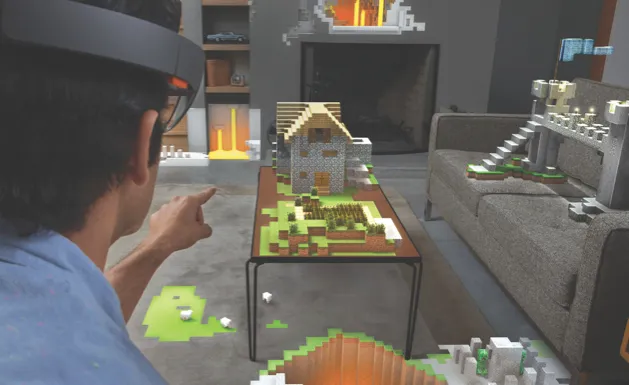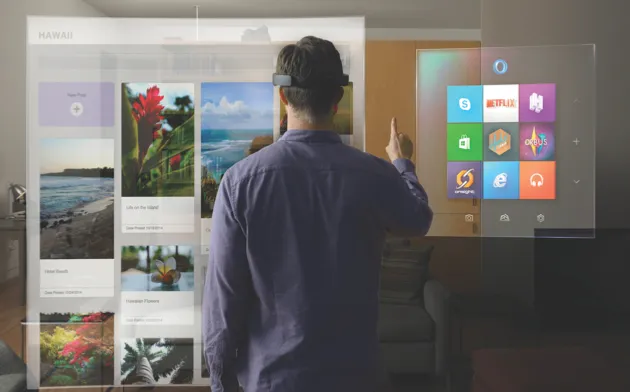The physical and virtual worlds are about to collide. Microsoft’s latest research project, the HoloLens, wants to liberate your software from the screen and let it roam around in the real world via a pair of specs. Imagine popping on your HoloLens and then building a virtual Minecraft castle on your desk. That’s the experience it could create.
The potential of the HoloLens doesn’t just lie in gaming. The idea is that all the apps that currently sit behind your display could climb out into the real world. In Microsoft’s demo, a designer moulds the curves of a superbike with his hands; a dad gives his daughter virtual instructions to fix her sink; and a scientist explores Mars.
At first sight, the technology seems too fantastical to be real, and it wouldn’t be the first time a tech company made promises it couldn’t deliver. Closer inspection, however, reveals that the HoloLens simply blends existing technology to create something new.

First, the glasses use a prism projector (like Google Glass) to create images directly in your field of vision. Second, Microsoft’s own Kinect tech allows the headset to see, and make sense of, the world around it. Just as with Kinect on the Xbox, it follows your arms and hands, and translates this into instructions to the computer. By pairing these technologies, the HoloLens can recognise a flat surface and create a three-dimensional image in front of you. And then there’s the sound.
For a virtual object to feel truly real, it needs to create noise, and that audio has to come from the right direction. The headset is fitted with special earphones and software that can simulate noises in a 3D space. This is crucial for immersion, especially since Microsoft hopes that the HoloLens will be used for simulations.

So far, so sci-fi. But there is a drawback. While all this technology does exist and can be fitted together, it’s all rather large. The official imagery shows Microsoft’s aspirations for the final product, but the prototype is very different in reality. The first developers to wear the HoloLens (at Microsoft’s secret basement laboratory) described wearing numerous straps, screws, battery packs and even fans that cooled the whole unit down. But every great idea starts with a cobbled-together prototype. Screens, batteries and processors are shrinking by the day, so there’s very little to stop Microsoft putting together a finished device – closer to their concept imagery – within the next two years. And there’s one very good reason for that.
That reason is Windows 10. Microsoft says it will build HoloLens compatibility into its next big operating system, which is something of a lifeboat for a company that has been losing users for the last few years. On top of that, the head of the project is the same Microsoft employee who delivered the Kinect technology that first blew us away five years ago. There’s no reason why they can’t do the same with the HoloLens now.
This preview first appeared in the April 2015 issue of the BBC Focus magazine.
Follow Science Focus onTwitter,Facebook, Instagramand Flipboard
